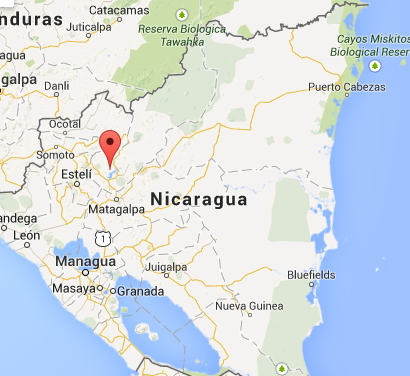Miraflor, Nicaragua
![]()
![]()
![]()
![]()
![]()
![]()
![]()
![]()
![]() Click on Programs to learn more about their work in this community
Click on Programs to learn more about their work in this community
General Information

| Population* | 16,000 |
| Number of Houses | 3,672 |
| Avg # of people per home | 4-5 people |
| Number & Percentage of Children |
0-5: 19% 3040 children 6-14: 22% 3,520 children |
| Electricity | Only 50% of the community has electricity. |
| Location | Located 33 kilometers from Estelí. It covers an area of 47,000 hectares, corresponding 54 communities ad 15 villages. It is northeast of Estelí. |
| Municipality | Estelí |
| Department | Estelí |
| Health Center | Yes, in good condition |
| Distance from compounds | Approximately an hour and a half. |
| Road conditions | Perfect conditions |
* Population does not reflect how many patients will be seen on Medical
Brigades as many people from surrounding communities come seeking
Medical Brigades medical attention.
Top Three Needs Expressed
• Constructions of latrines at least 3,000.
• Construction of a water system.
• Housing
There are 39 school centers in the Miraflor reserve where over 3,000 students attend one of these 39 school centers in Miraflor in the morning. There are 600 high school students that attend school on Saturdays. Many students travel from the surrounding communties to attend school.
An organization called "Foro Miraflor" has developed 31% of the water systems in parts of the community, but 69% of the community does not have access to this water service. Often times people have to go to the rivers and use public wells where they use the same water for washing clothes and bathing.
This community has four health units built 15 years ago by the Government of Nicaragua through FISE. These health units has 4 offices each with a waiting room and a pharmacy. It is equipped with 4 full-time medical resources, except on the weekends. The difficulty in this area is that there are no medications, patients have to go to the city to buy them and often times they cannot afford them.
The main source of income for this community is growing vegetables such as: cabbage, tomatoes, onions and potatoes. The land that these crops grow on are in the hands of a few landowners and the rest of the people in the community work as laborers for these landowners. Other sources of income include: ecotourism, remittances and small scale businesses.
Foro Miraflor, Familias Unidas, Xilonen, Caritas, Agro acción alemana, Trocaide, MAG FOR, MARENA, INTA, Ministerio de la economia familiar, MINSA, Mined, Ejercito Nacional, Policia Nacional, FAREM and UCATSE.